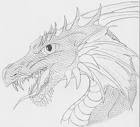 Indonesia has the 4th National Park into a world heritage recognized by UNESCO, a UN agency.
Indonesia has the 4th National Park into a world heritage recognized by UNESCO, a UN agency.
Indonesia's tropical forests is the third largest forest world after Brazil and the Democratic Republic of Congo. Tropical forests are home and the last hideout for the wealth of the world's unique biodiversity.
Indonesia's tropical forests vast 98 million acres (estimate forest area in 2000). The data contained in the book State of the Forest Indonesia Portrait, FWI / GFW 2001, Bogor, Indonesia, the existing biodiversity in the forests of Indonesia covering 11% of the world plant species, 10% of species of mammals, and 16% of species of birds. Around 17,000 Indonesian islands has seven main geographical areas and bio-diversity of habitat types of extraordinary.  1. Komodo National Park
1. Komodo National Park
Komodo National Park consists of three large islands of Komodo, Rinca island and Padar island, and 26 large islands / other small. A total of 11 pieces of the mountain / hill in the Komodo National Park with the highest peak of Mount Satalibo (± 735 meters above sea level). National park land territory is 603 km ² and the total area is 1817 km ².
Natural state of the dry and arid makes a unique. The existence of a vast savanna plain, limited water resources and the temperature hot enough; it is the habitat preferred by ancient animal similar dragon (Varanus komodoensis).
Much of this national park is savanna with palm trees (Borassus flabellifer) the most dominant and distinctive. Some plants in the Komodo National Park include rattan (Calamus sp.), Bamboo (Bambusa sp.), Acid (Tamarindus indica), bulging (Sterculia foetida), lote (Ziziphus jujuba), and mangrove (Rhizophora sp.)
In addition to typical Komodo animals, there are deer (Cervus timorensis floresiensis), wild boar (Sus scrofa), ajag (Cuon alpinus javanicus), wild horse (Equus qaballus), wild buffalo (Bubalus bubalis), 2 types of turtles, 10 species of dolphins , 6 types of whales and mermaids are often seen in the waters of the sea Komodo National Park 2. Ujung Kulon National Park
2. Ujung Kulon National Park
Ujung Kulon National Park is representative of tropical rain forest ecosystem remaining lowland and the largest in West Java, and is an ideal habitat for the survival of endangered species the Javan rhinoceros (Rhinoceros sondaicus) and other rare animals. There are three types of ecosystems in this national park aquatic ecosystem of the sea, marsh ecosystems, and land ecosystems.
Diversity of plants and animals in Ujung Kulon National Park began to be known by the researchers, Dutch botanist and English since 1820. Approximately 700 species of plants well protected and 57 of them rare species such as merbau (Intsia bijuga), palahlar (Dipterocarpus haseltii), Lagerstroemia (Lagerstroemia speciosa), luminous (Pterospermum DIVERSIFOLIUM), ki rain (Engelhardia serrata) and various types of orchids.
Animals in Ujung Kulon National Park consists of 35 species of mammals, 5 types of primates, 59 species of reptile, 22 amphibian species, 240 species of birds, 72 species of insects, 142 species of fish and 33 types of coral reefs. Endangered species and protected than the Javan banteng (Bos javanicus javanicsu), ajag (Cuon alpinus javanicus), Surili (Presbytis comata comata), monkey (Trachypithecus auratus auratus), deer (Cervus timorensis russa), leopard (Panthera pardus), cats rock (Prionailurus bengalensis javanensis), gibbons (Hylobates moloch), and giant clam (Tridacna gigas). 3. Lorentz National Park
3. Lorentz National Park
Lorentz National Park is representative of the most complete ecosystem for biodiversity in Southeast Asia and the Pacific. This area is also one of the three regions in the world that has a glacier in the tropics. Extends from the top of the snow-covered mountain (5030 meters above sea level), to sweep the coastal waters with mangrove forests and borders the Arafura Sea waters. In this stretch, there are remarkable ecological spectrum of alpine vegetation region, sub-alpine, montane, sub-montane, lowland, and wetland
Plant species in national parks, among others, nipa palm (Nypa fruticans), mangrove (Rhizophora apiculata), Pandanus julianettii, Colocasia esculenta, Avicennia marina, Podocarpus pilgeri, and Nauclea coadunata.
The types of animals that have been identified in the Lorentz National Park as many as 630 species of birds (± 70% of the birds in Papua) and 123 species of mammals. Bird species characteristic of this national park there are two types of cassowary, four megapoda, 31 species of doves / pigeons, parrots 30 species, 13 bird species of shrimp, 29 species of birds of honey, and 20 species of endemic long-tailed paradise (Paradigalla caruneulata) and quail snow (Anurophasis monorthonyx).
Mammal fauna is recorded among other pigs echidna spines (Zaglossus bruijnii), pigs duri Echidna (Tachyglossus aculeatus), 4 types of possum, wallaby, bobcat, and tree kangaroos.
4. Tropical rain forests of Sumatra
Tropical rain forests of Sumatra are home to various living creatures. Many of them are a species of endangered animals, such as the Sumatran orangutan, Sumatran tiger, Sumatran rabbit, and the Sumatran rhinoceros. In tropical rain forests also grow a variety of endemic plants, such as IN NATURE, the world's largest flower Rafflesia and Amorphophallus highest interest.
Friday, January 22, 2010
4 Existing World Heritage in Indonesia
Subscribe to:
Post Comments (Atom)

No comments:
Post a Comment